
Death, taxes and divided opinion over Kia’s new Tasman ute.
Kia’s intention to shake up the popular dual-cab ute scene in Australia has created quite the stir in 2025, assuring continued airtime in pub conversations and on internet forums alike. It began with the unveiling of a polarising design in October 2024, and the furore has followed the Korean export ever since – prodded along by clever marketing and a who’s who of sporting celebrities spruiking the Tasman’s wares.
Subjective opinions aside, it is finally time to see how the Tasman measures up against its cohort in a range of scenarios. Held in Bathurst, NSW, the Australian Tasman launch took in extensive country driving, tow testing, and a rugged stint of off-road driving.
All told, the Tasman holds up extremely well, proving it is possible to cast the net even wider on the popular dual-cab field.
The Kia Tasman dual-cab ute range opens at $42,990 plus on-road costs in Australia for the S 4x2 model, while an equivalent 4x4 version will set buyers back $49,990 plus on-road costs.
The range then moves up through SX ($54,990 plus ORCs), SX+ ($62,390 plus ORCs), X-Line ($67,990 plus ORCs) and X-Pro ($74,990 plus ORCs) trims.
At those prices, the Tasman aligns quite closely with legacy dual-cab utes including the Ford Ranger, Toyota HiLux, Mitsubishi Triton and Nissan Navara. It is quite a bit more expensive than rivals such as the GWM Cannon, BYD Shark 6 and LDV T60.
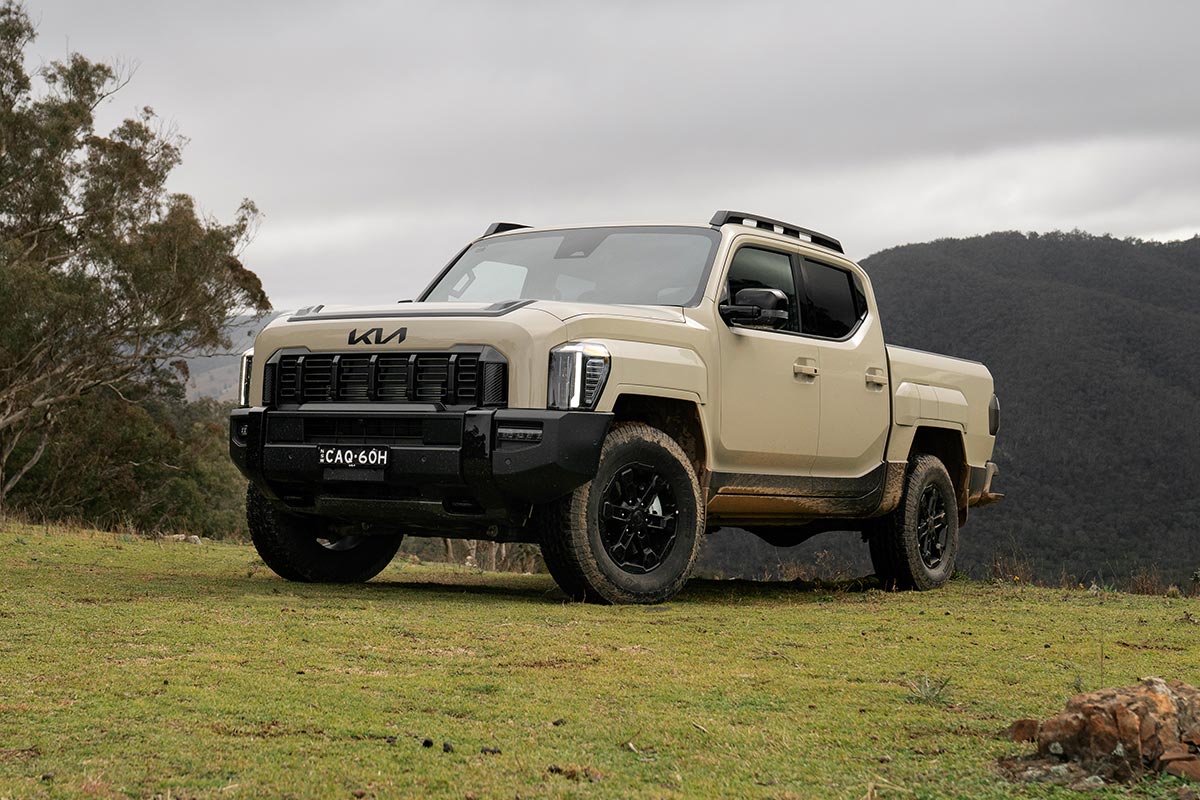
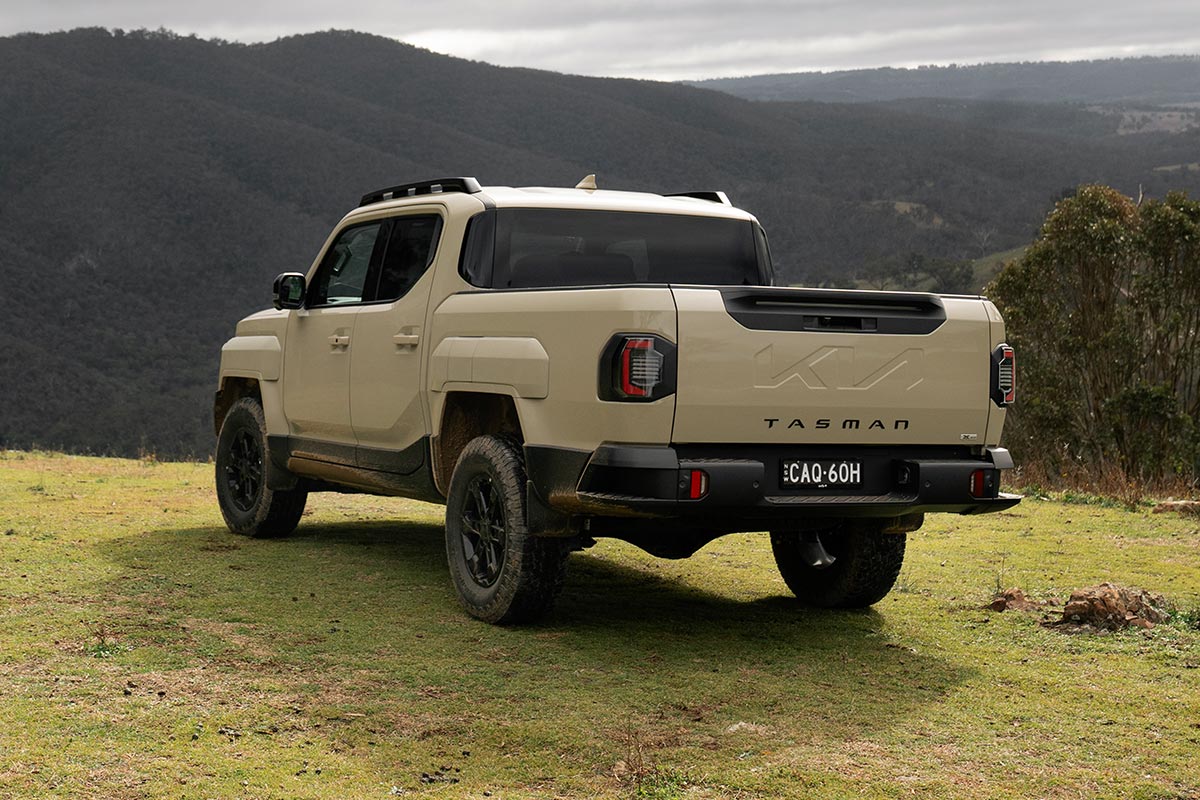
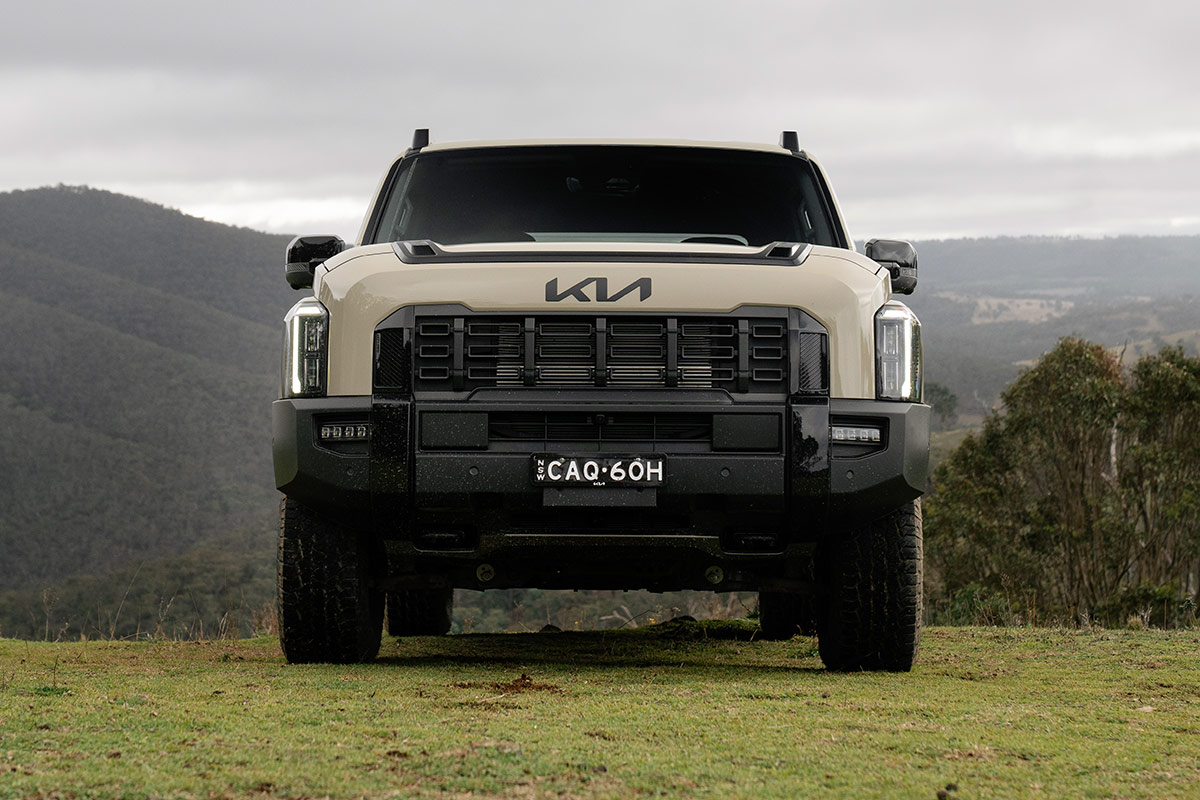
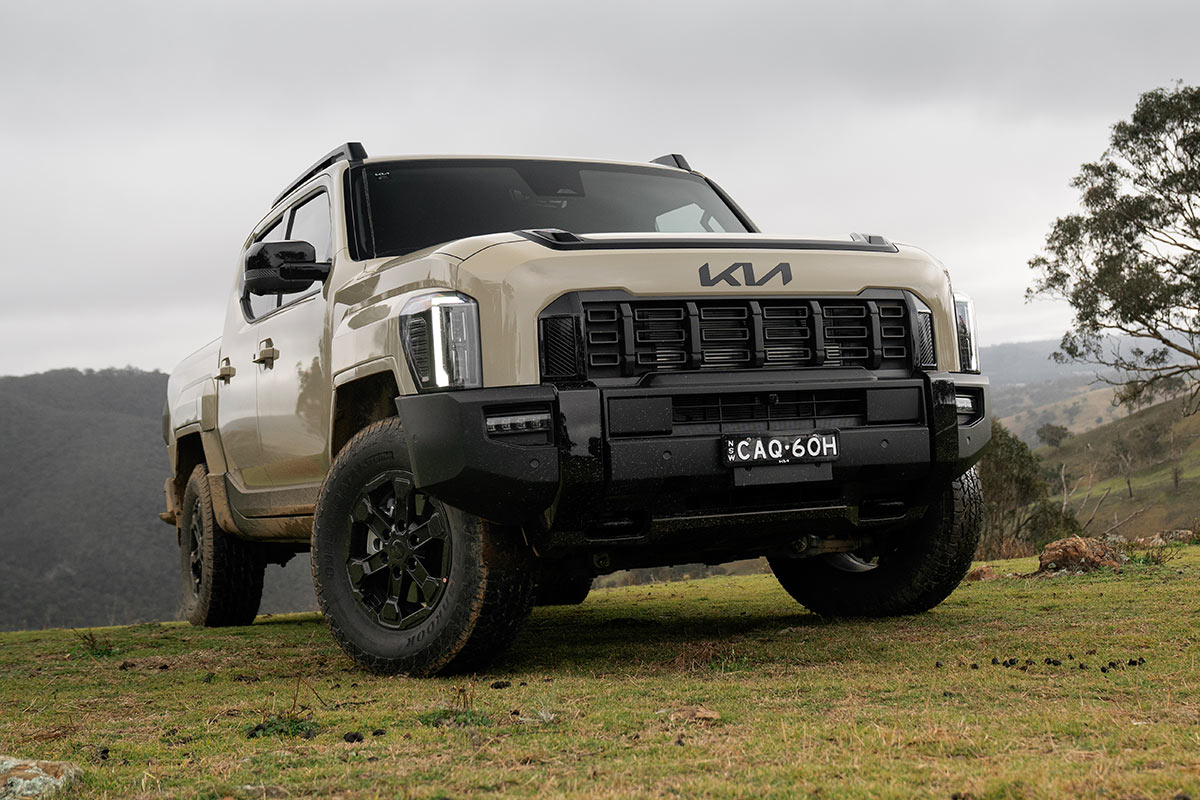
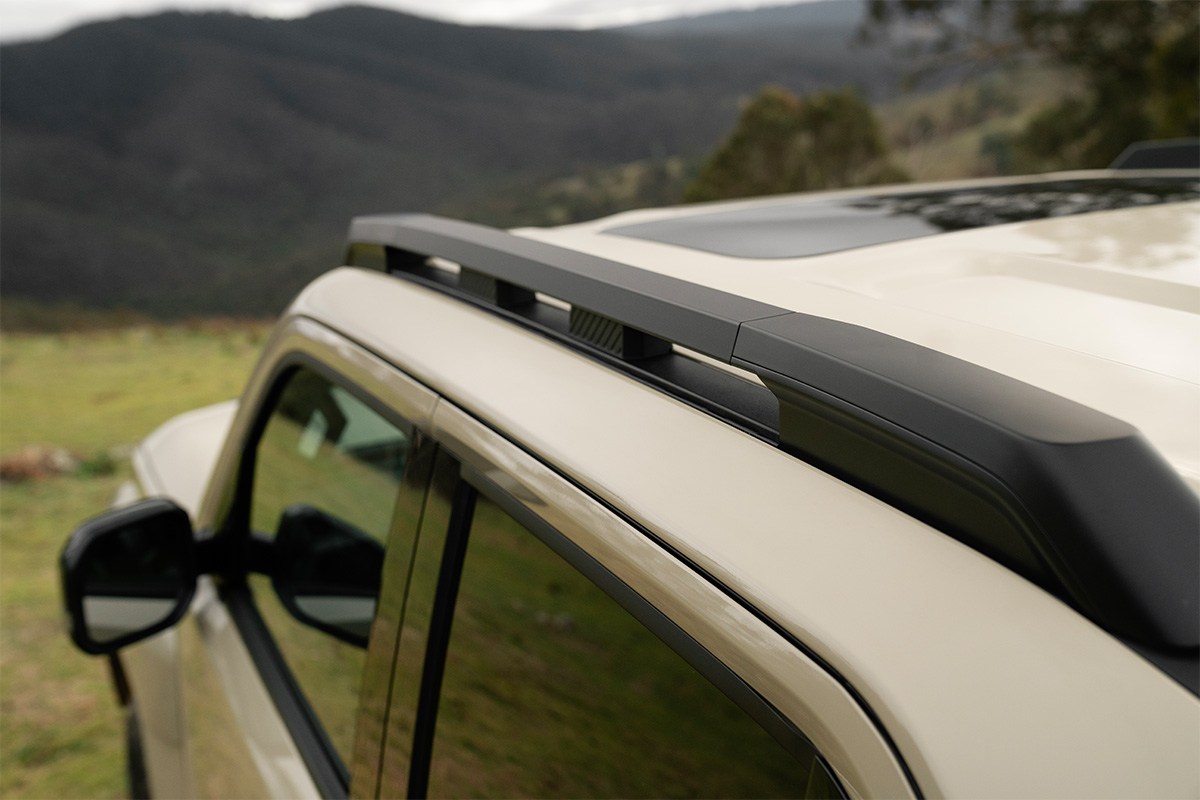
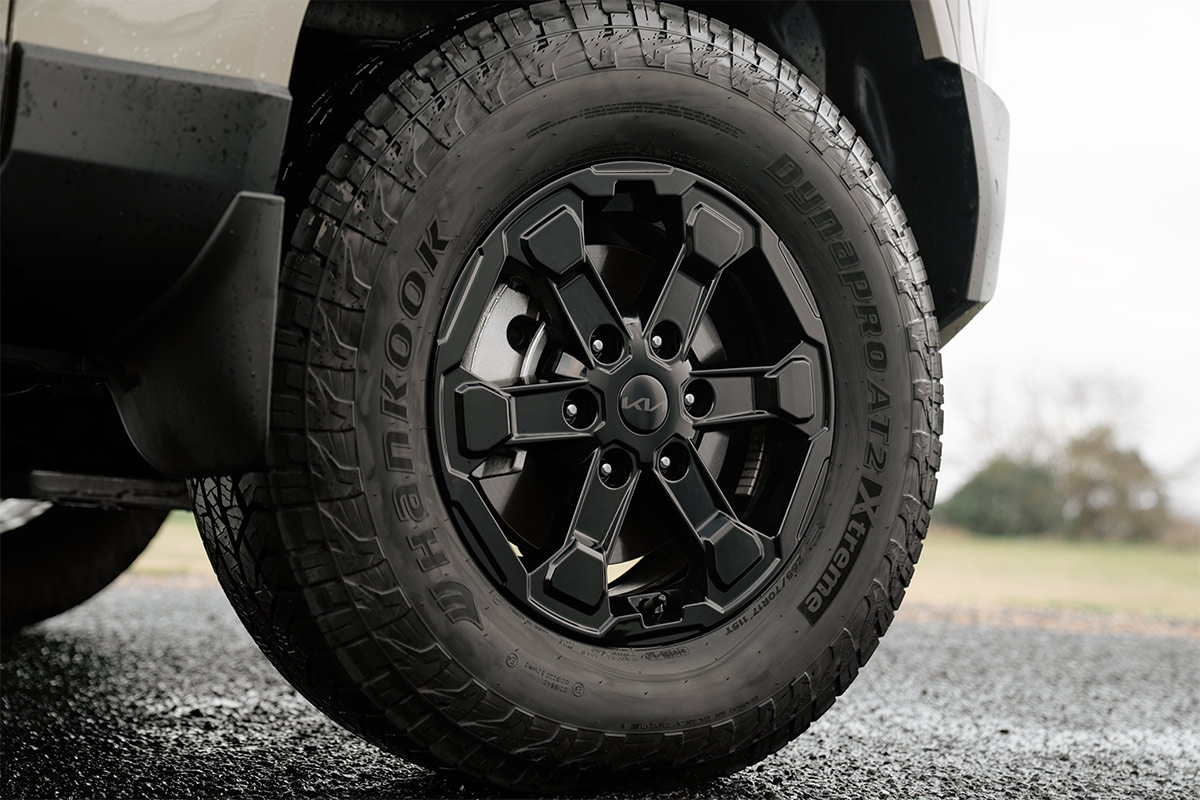
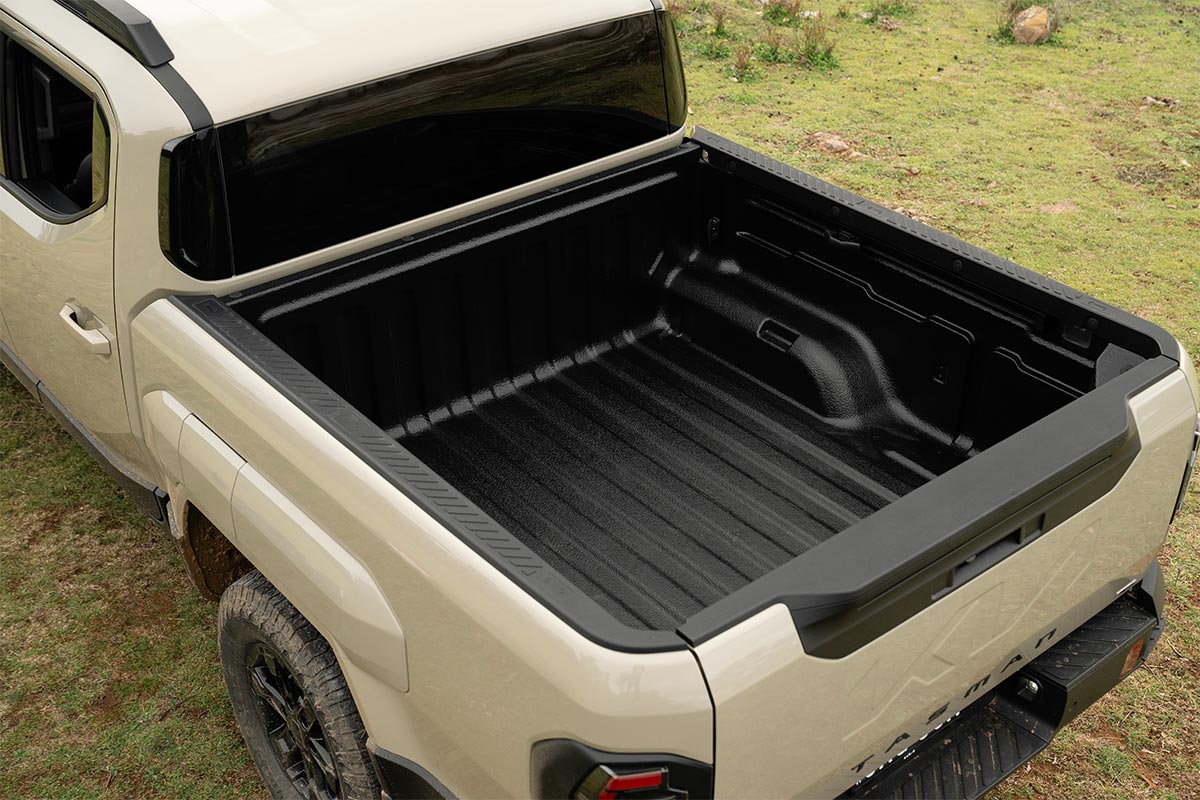
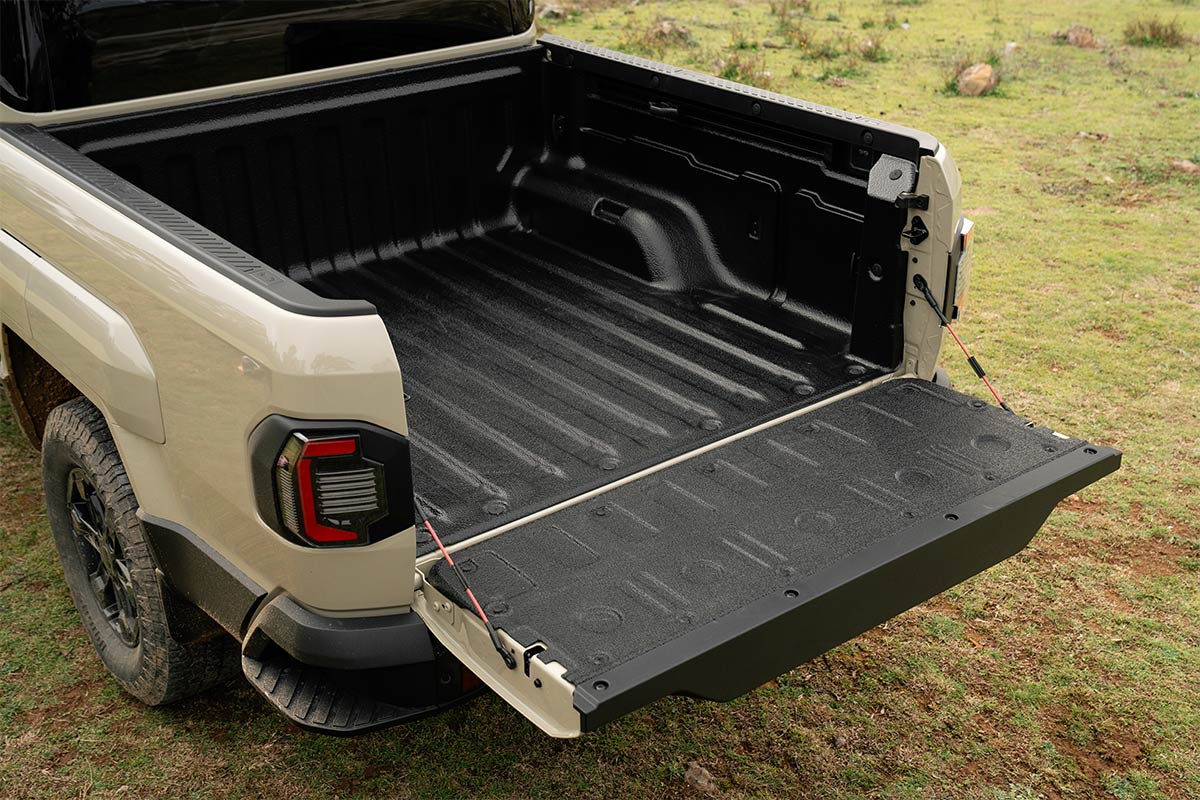
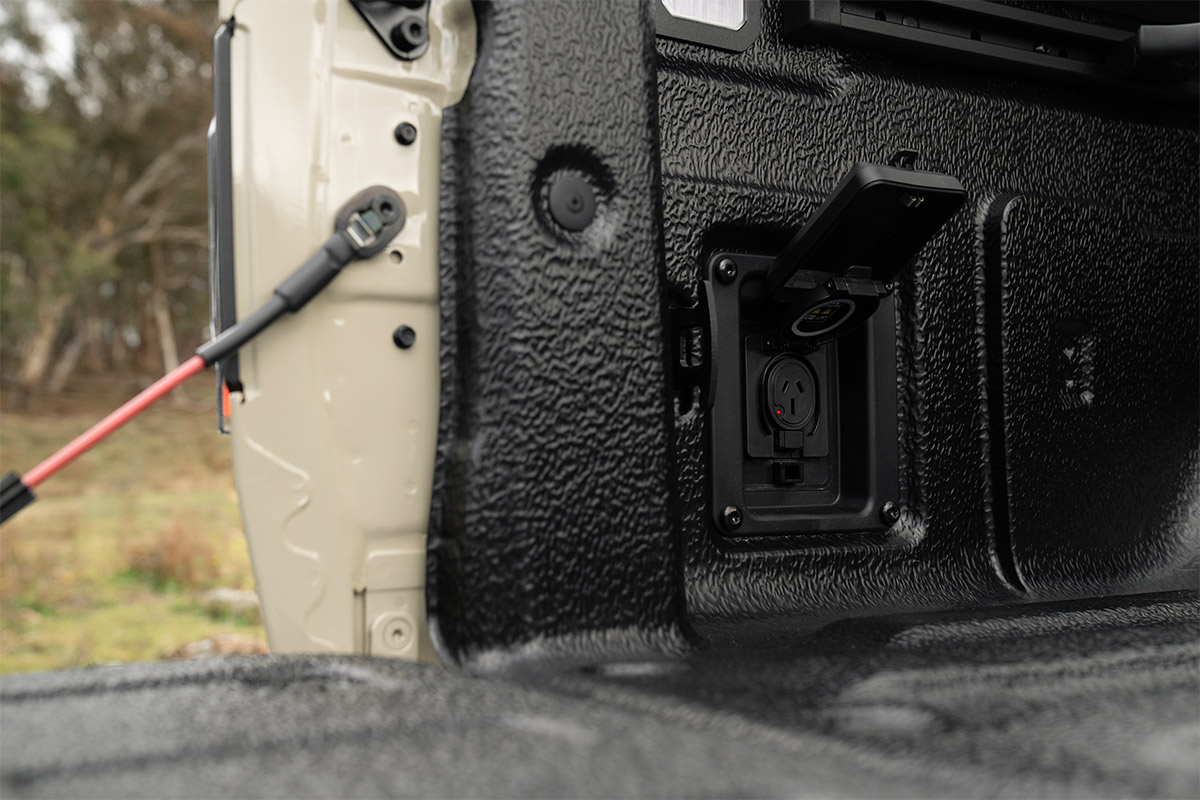
Although the Tasman has captured almost unprecedented attention for its exterior looks, the interior is what prospective buyers ought to pay more attention to.
That’s because the cabin space of the Tasman pushes the regular dual-cab ute class to new heights, with excellent dimensions across both rows, a thoughtful design, strong storage and quality furnishings at the contact points.
Kia spent plenty of time benchmarking other products with respect to cabin fit out, and it shows. The seats offer remarkable comfort on longer journeys (even after a 3.5 hour stint behind the wheel, your correspondent emerged from the cabin feeling fresh) while the 1.9 metre overall cabin width lends the car an airy and comfortable feel.
Dual 12.3-inch screens dominate the dashboard centre fascia, divided by a dedicated 5-inch display for climate controls, and offer seamless functionality and legibility. Although physical switchgear is sparse, the presence of a permanent climate display means you’re not fishing through touchscreen menus for basic commands (even if said screen is hidden behind the steering wheel rim).
The centre console (pictured below) offers excellent day-to-day amenity, with a mix of open cubbies, cupholders and storage compartments – even a flip-out makeshift table for occasions where you need to pull over and pull out the laptop for an overdue work assignment.
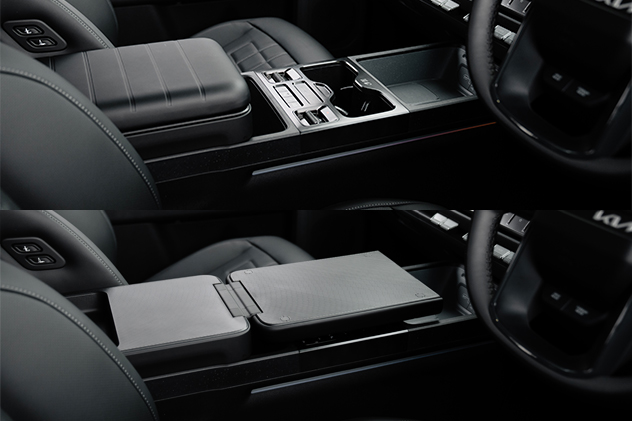
We also had no issue with outward vision, such is the broadness of the windscreen and the driver seat’s ability to sling low within the cockpit, enabling optimum feeling with the car.
The rear seat of the Tasman extends the virtues of the front, with the same soft-touch contact points adorning the doors, and excellent leg, shoulder and head proportions enabling ample space for a couple of adults on longer journeys, or little ones. On the latter front, there are ISOFIX attachment points plus top-tether points on the outbound pews.
The rear seat is loaded with niceties, too: USB ports, rear air vents, a household power outlet, seat bases that fold up and clever rear seat storage. Top-spec models also include a slide and recline function, which is quite uncommon within this segment.
In earnest, we cannot think of another dual-cab ute product that has paid such careful attention to cabin space and fit out. The Kia climbs straight to the top.
What’s also equally considered is the tray space, which is said to be best in class. An Australian-spec pallet will squeeze between the wheel arches, while a good spread of tie down points are located around its perimeter, together with a household power outlet, a damped tailgate, exterior steps and a light. Not all grades get a tub liner, which is a minor detraction.
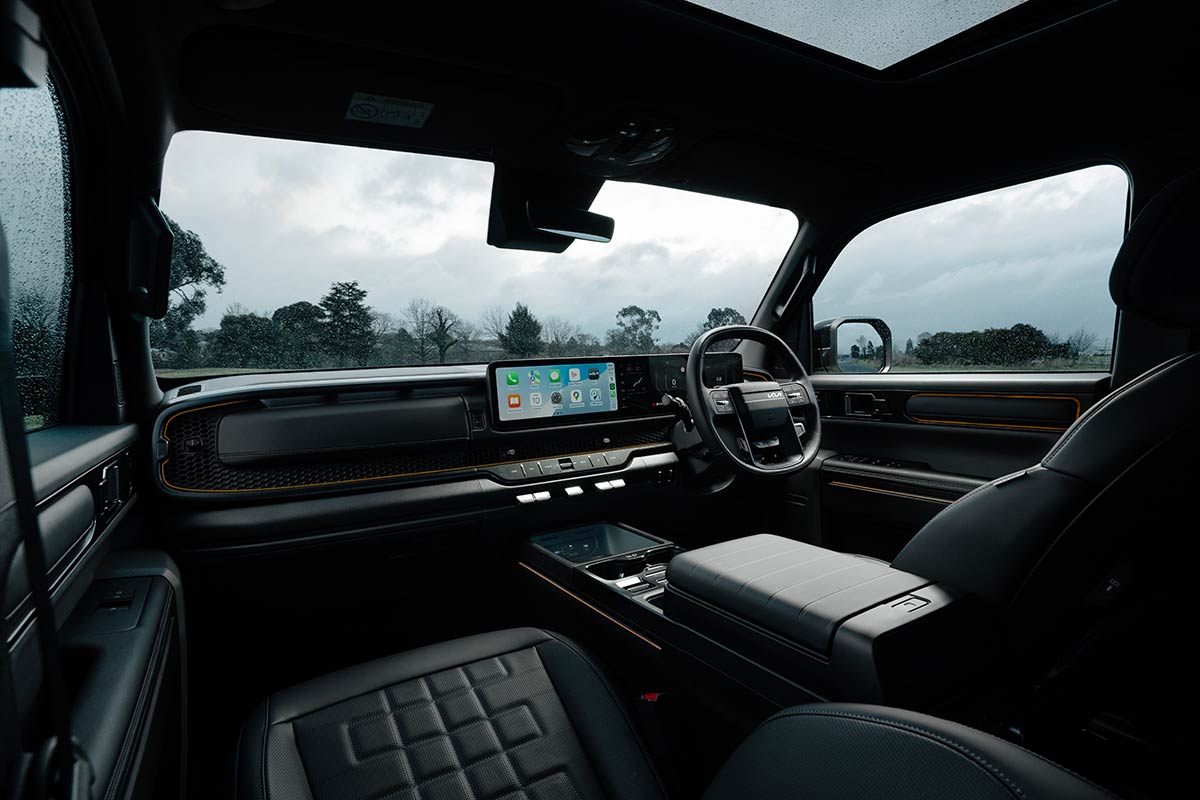
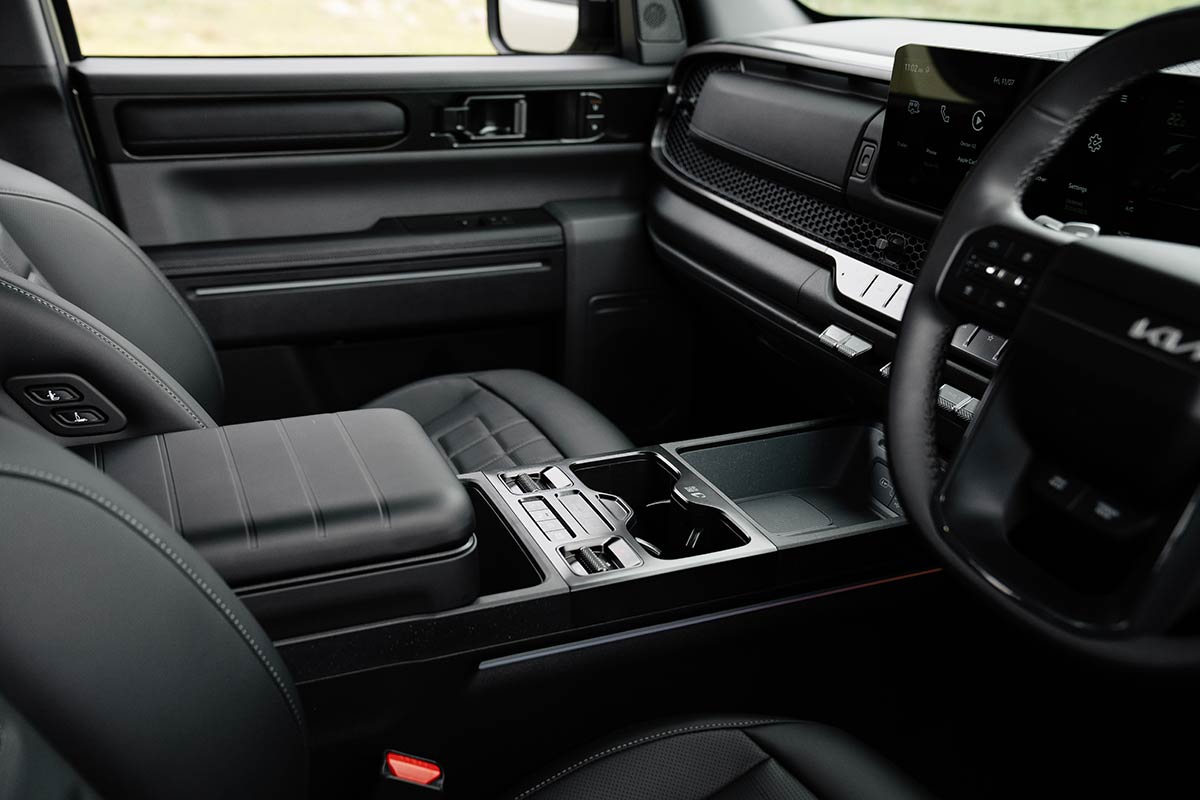
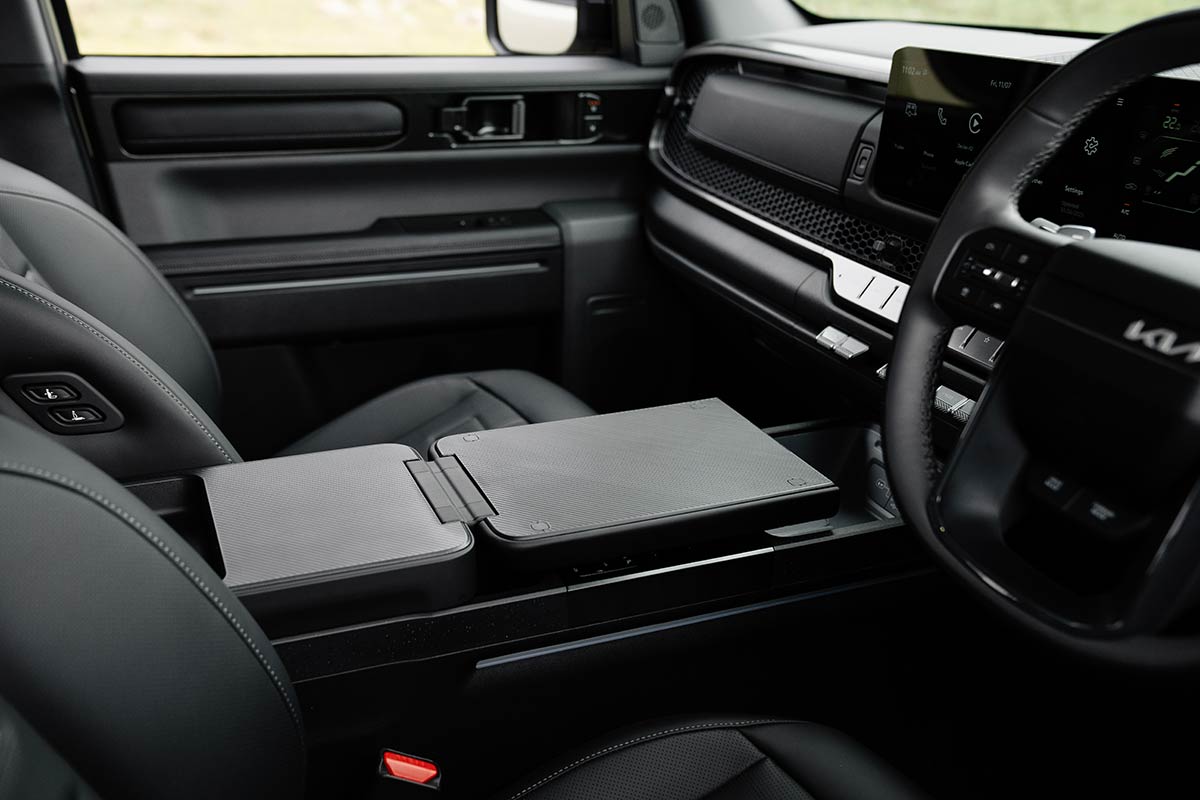
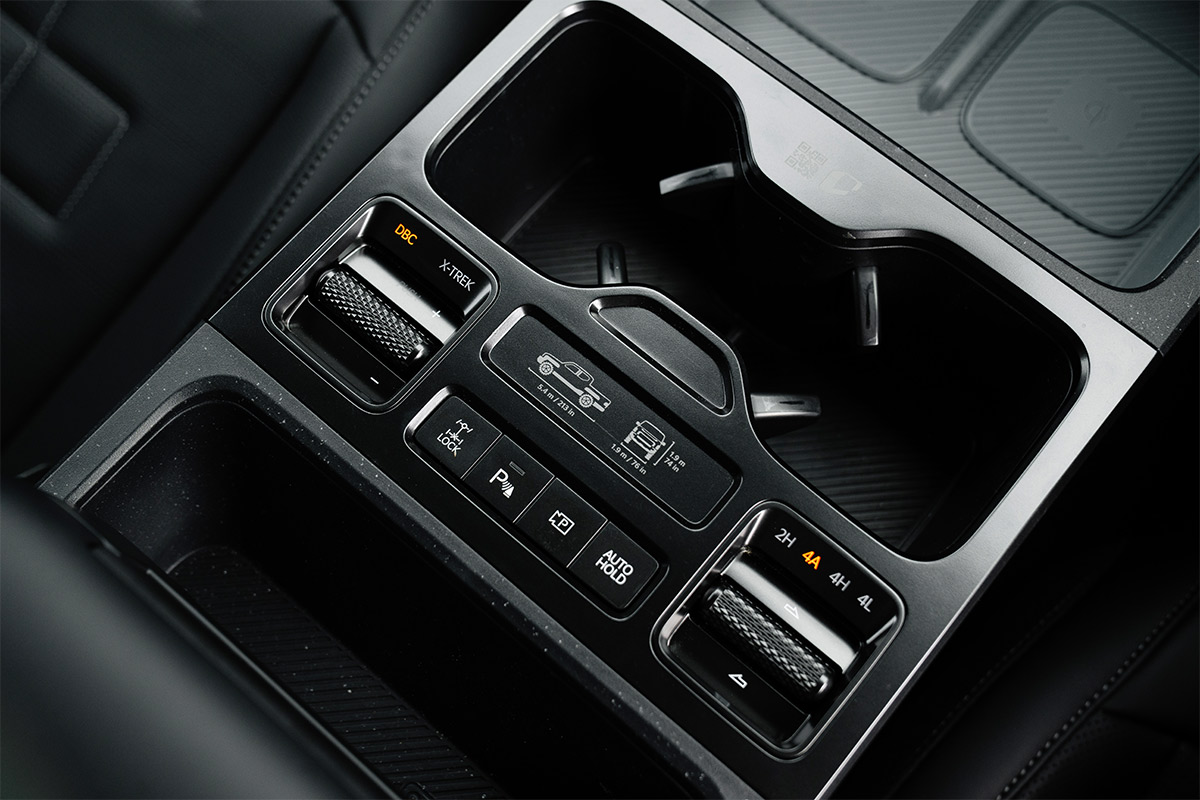
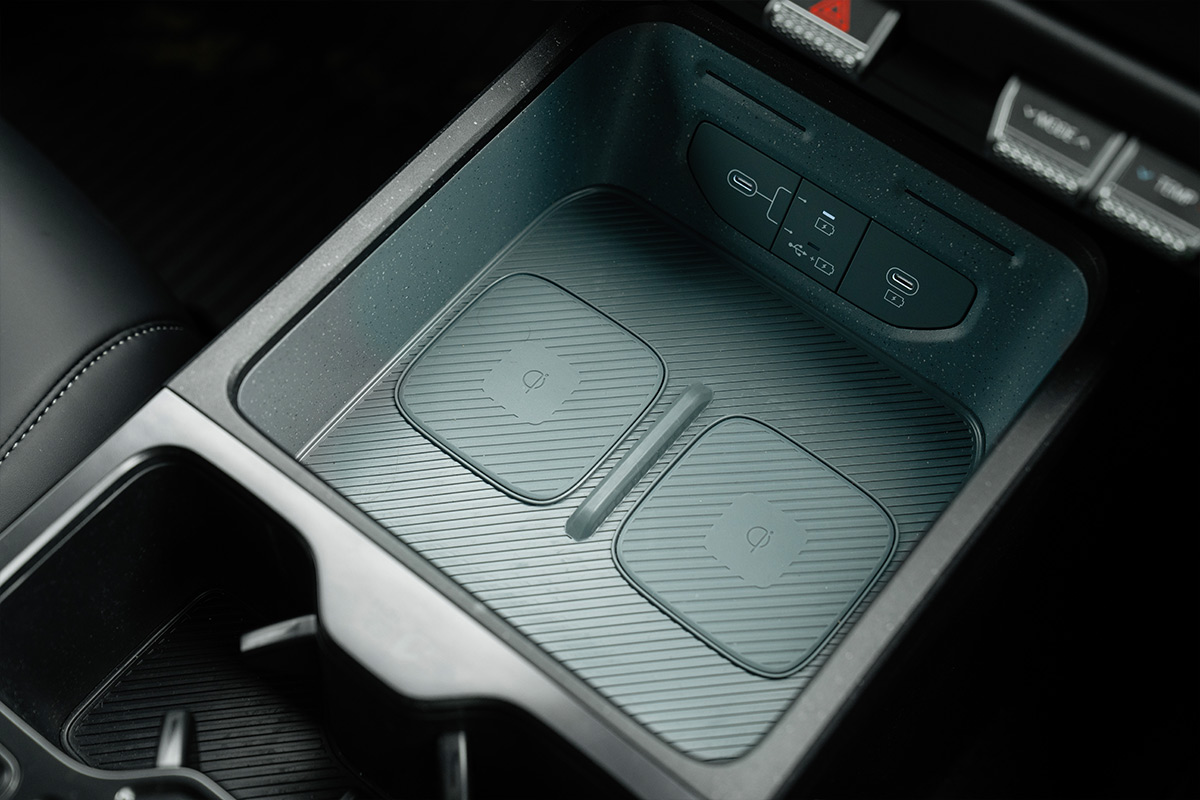
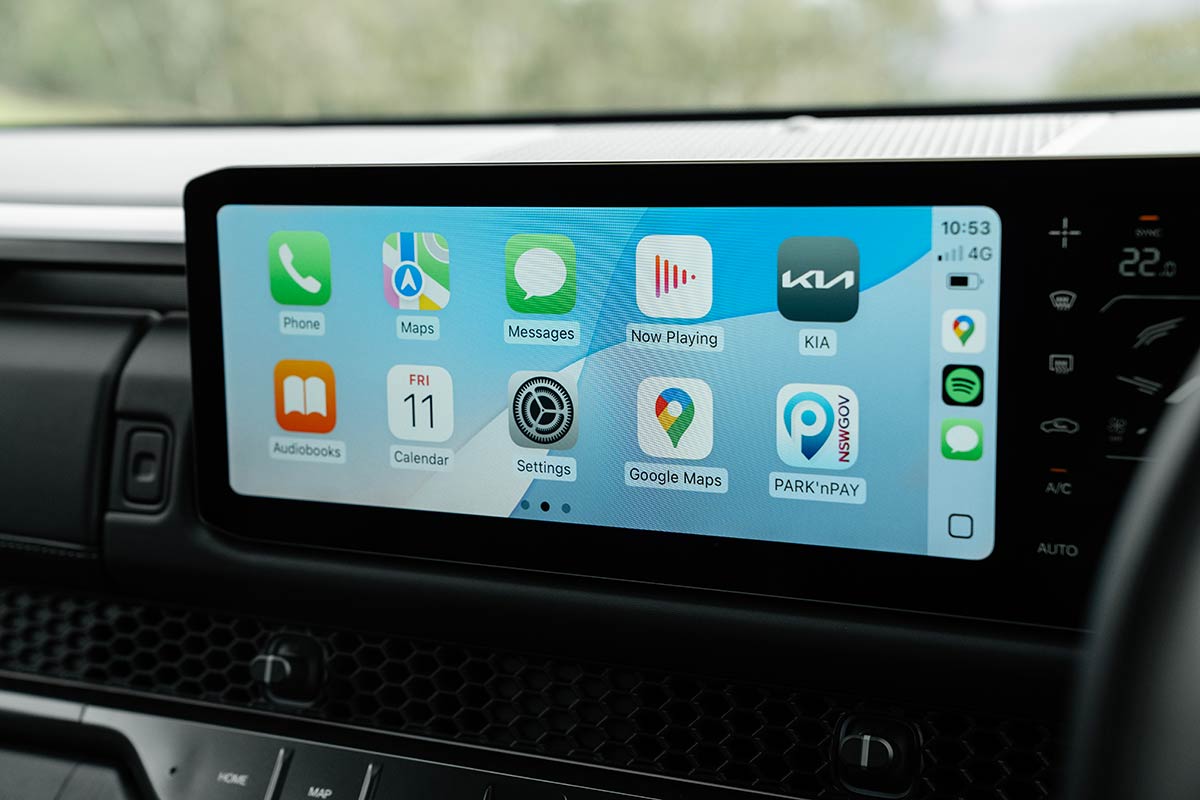
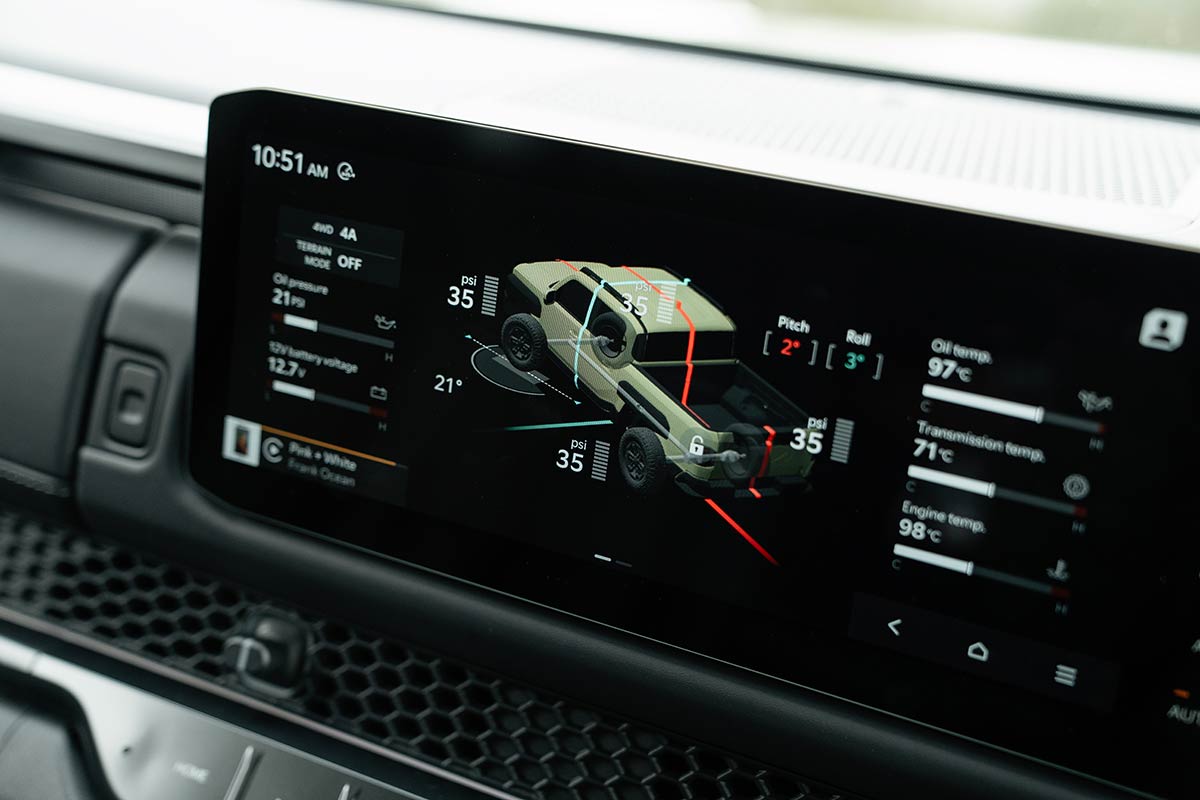
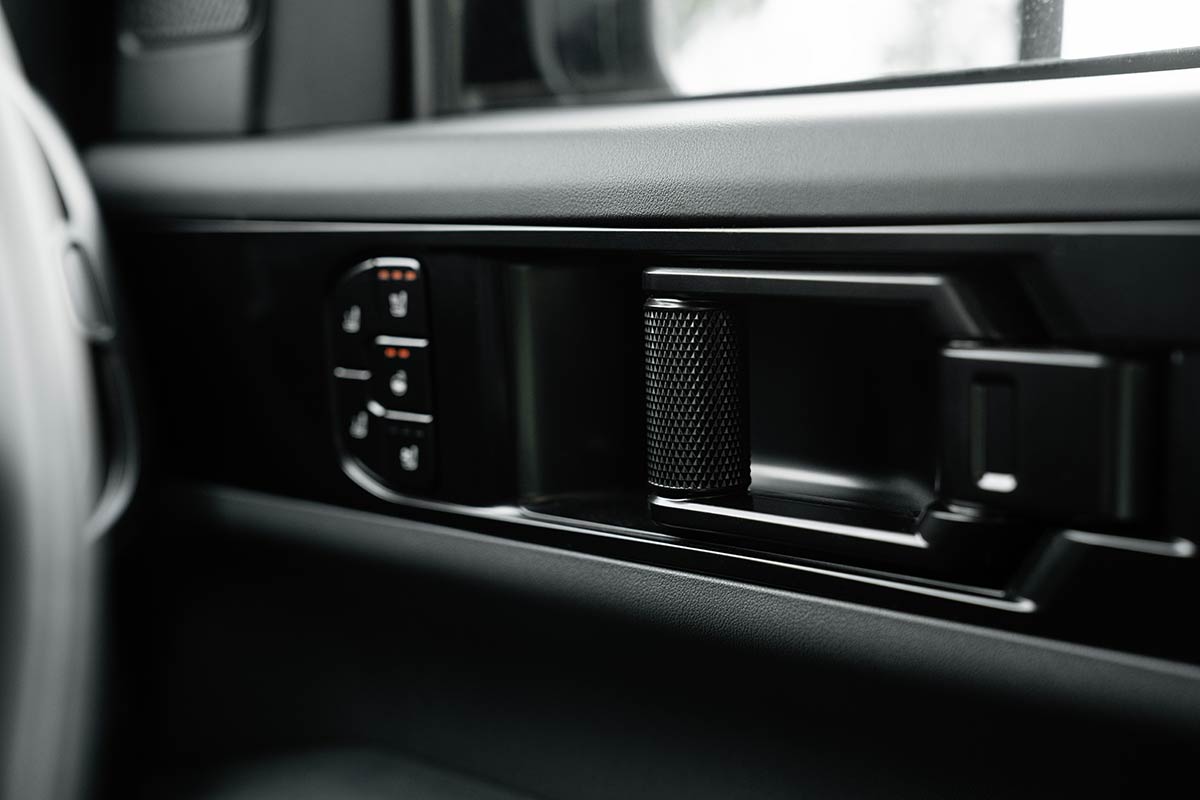
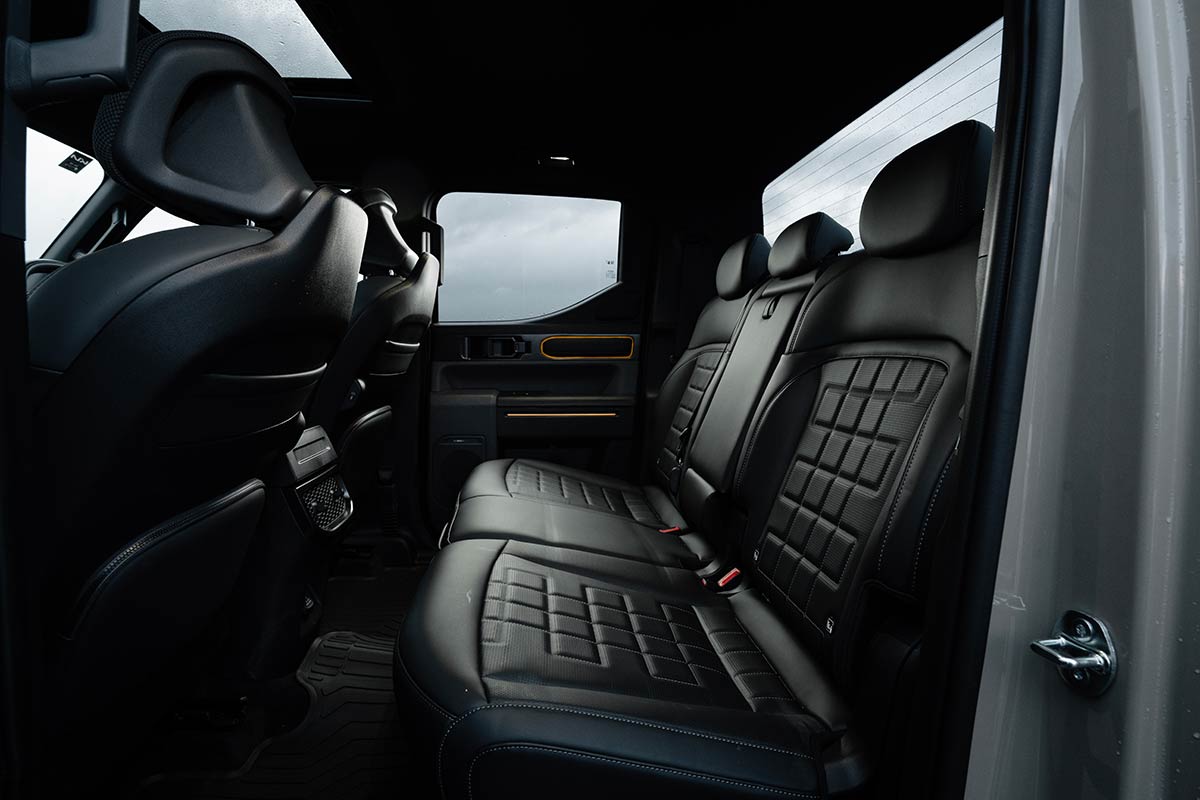
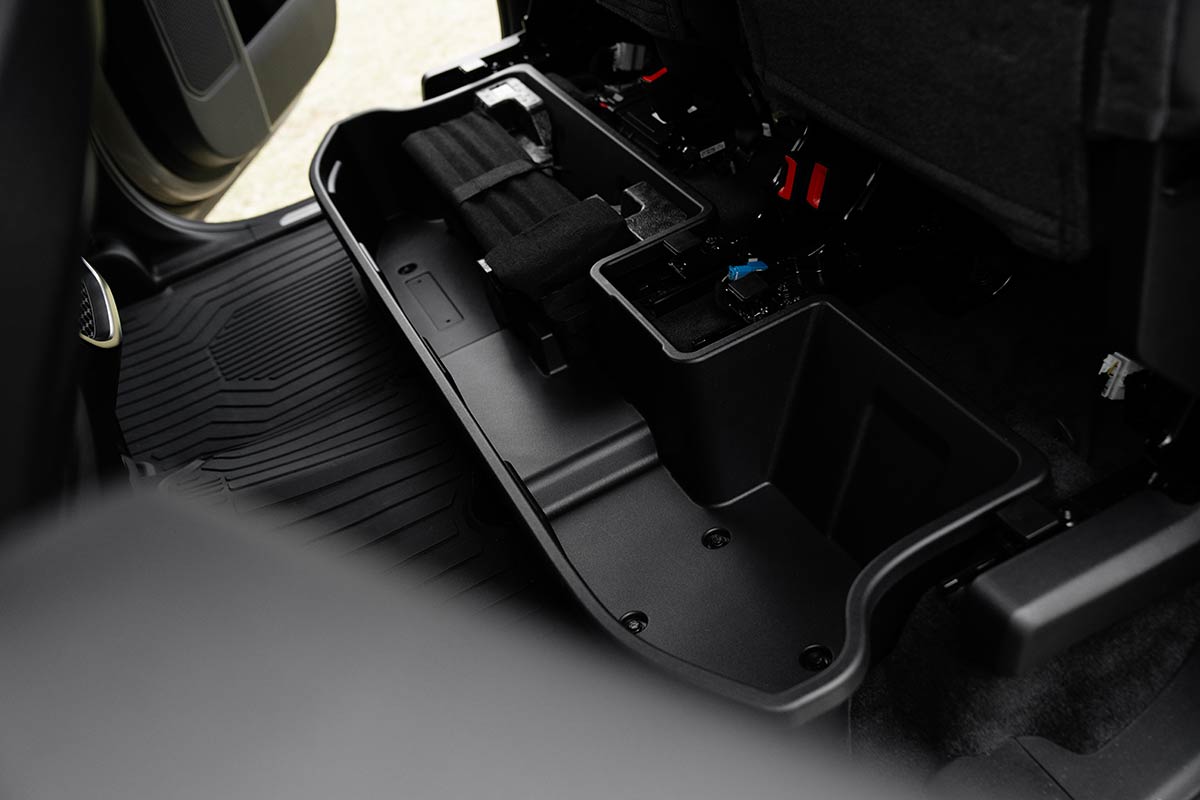
The Tasman is well equipped even at a base level, offered with LED headlights and tail lights, keyless entry and start, dual-zone climate control and a cloth interior.
Moving up through the grades introduces items such as artificial leather seats with power adjustment, heated and in some instances cooled front seats, and much more.
The tech story remains largely the same across the range, courtesy of two 12.3-inch digital displays divided by a separate 5-inch dedicated climate control display. The Tasman also comes with Apple CarPlay and Android Auto connectivity.
The Tasman is backed by Kia’s seven-year/unlimited kilometre warranty, and is the first ICE model from the manufacturer to be offered with upfront servicing packages. A five-year service pack will set 4x4 buyers back about $2800, based on 12-month/15,000km intervals.
Also new for Kia is the introduction of one-hour services for Tasman, removing the need to spend half your day waiting at the dealership.
— Sam Charlwood
The Tasman is very safe, backed by a five-star ANCAP safety rating.
Closer reading reveals only select versions get the full five-star complement to appease fleet buyers. Other models employ a different front-end design which isn’t as amenable to vulnerable road users, but you get the idea.
In any case, the Tasman range is equipped with autonomous emergency braking with car, pedestrian, cyclist and junction assist, blind spot detection, driver attention alert, tyre pressure monitoring, multi-collision braking, adaptive cruise control, front and rear parking sensors, and a reversing camera.
These systems are effective, but their tuning and intervention is plain annoying, and a major detraction from the drive experience. We found ourselves switching off the driver attention monitoring, speed limit warning and lane keep assist every time we drove the car.
The entire Kia Tasman range sources power from a 2.2-litre turbo-diesel four-cylinder engine, matched standard to an eight-speed automatic transmission.
The diesel engine is the same found in the Sorento SUV, among many other Kia exponents, and in this tune it makes 154kW and 440Nm. Although those figures are well down on dual-cab class leaders, Kia argues the peak torque arrival from 1750rpm makes it more than up to the task. Continue reading to find out.
In any case, the Tasman is offered in both rear-wheel drive and four-wheel drive guises depending on grade. The latter offers low-range and high-range four-wheel drive, and a mechanical rear diff lock which reacts automatically to wheel slip. X-Pro variants score a more sophisticated electro-mechanical rear diff lock which can be turned on at driver discretion, while an 800mm water wading depth is shared across all models.
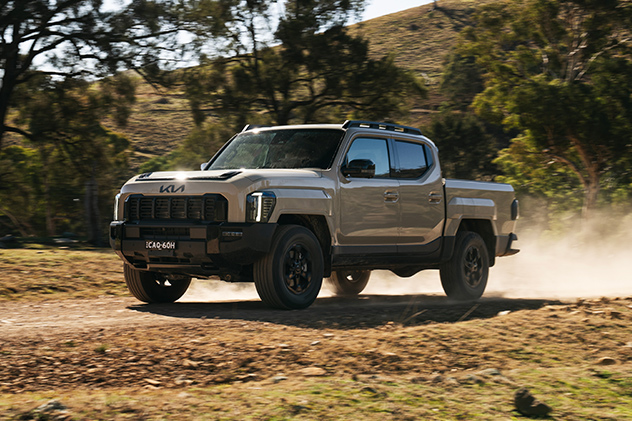
In terms of efficiency, a flagship X-Pro dual-cab variant of the Tasman claims 8.1L/100km on the combined cycle, meaning decent mileage from its 80-litre tank. We averaged closer to 10L/100km on test.
The Tasman is underpinned by a new ladder frame chassis featuring double wishbone front suspension and a leaf sprung rear rigid axle. Frequency-selective dampers employed at all four corners are the same as that used in the Kia EV6 and EV9, and offer excellent breadth over mixed surfaces.
Another boon for the Tasman is the fitment of an integrated brake controller, a feature reserved solely for the Ford Ranger until now – and one which takes away the need to fit aftermarket brake controllers after the fact. There is also trailer sway control standard, but buyers will need to pony up an additional $1100 if they want a tow bar and trailer wiring harness.
Speaking of towing, let’s talk payload and capacities. The Tasman range features a universal towing capacity of 3.5 tonnes braked, with a maximum 350kg downball weight., plus a gross combined mass of 6200kg (taking into account its circa 2.2-tonne kerb weight). Payload is rated upwards of 1000kg across every model.
With such a big build-up to the Tasman’s Australian launch, it’s fair to say there are some weighty expectations resting on its shoulders.
Happily, it delivers on most counts. What’s clear following our extensive 1000km week-long first drive of the Tasman is that it straddles the huge breadth of duties for a dual-cab ute quite well, with hardware shortfalls creating the bigger holes in its armoury.
On first impression, there is a level of polish here that is critically missing from legacy brands, including the Toyota HiLux, Mitsubishi Triton and Nissan Navara.
The diesel engine feels relatively muted and refined, the electrically-assisted steering is light in the hands at low speeds, and the cabin avoids the constant vibration and harshness that afflicts many other models.
The 2.2-litre does quite an admirable job in regular conveyance, percolating confidently as you climb the rev range and working harmoniously with the eight-speed auto. The engine tends to find its sweet spot in the middling revs and sits at a comfortable 1700rpm at highway passage to reflect thoughtful gearing.
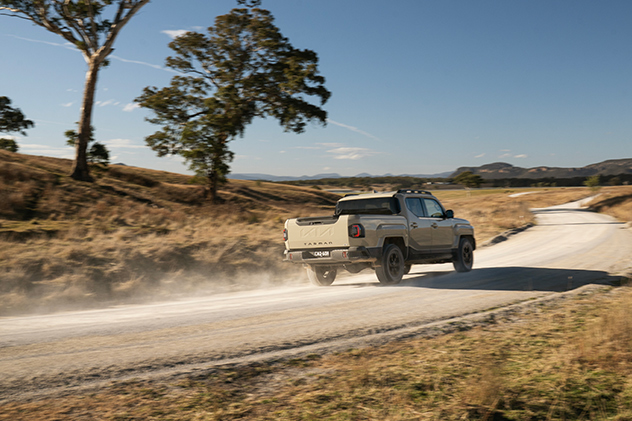
A lack of torque from the engine is occasionally exposed at speeds above 60km/h, with the gearbox constantly needing to kick down gears to keep it at its sweet spot. This lack of torque is particularly highlighted in the presence of the torque-laden Ranger V6. Kia is working on alternative drivetrains at the time of writing, but a big-bore diesel will not be among them.
Kia’s Australian lead in the Tasman development program is easily identified with the way it handles our ordinary roads. The steering is well weighted in all scenarios, and devoid of kickback, while the ladder frame chassis offers predictable composure and poise on a mix of driving roads.
Ultimately, the Tasman doesn’t match the excellent on-road attributes of Ford’s Ranger; lacking that vehicle’s front-end agility and control through corners, plus its incredible poise over broken sections of bitumen – particularly with respect to initial damping at the top of the stroke. Rather, the Tasman is more readily afflicted by tremoring that is common in this class, especially over low amplitude bumps; it just doesn’t quite do enough to take the edge off heavily pockmarked surfaces. Smoother A-roads present no such issue though, combining pleasantly with minimal cabin noise and a softness to the controls. As such, the Tasman is among the next best in class for ride and handling poise.
The other side of the coin is its off-road prowess, an attribute in which the Tasman appears unmatched at launch. Excellent ground clearance combines with clever electronic features and tuning to ensure the Tasman makes light work of some mogul-laden climbs and descents on launch.
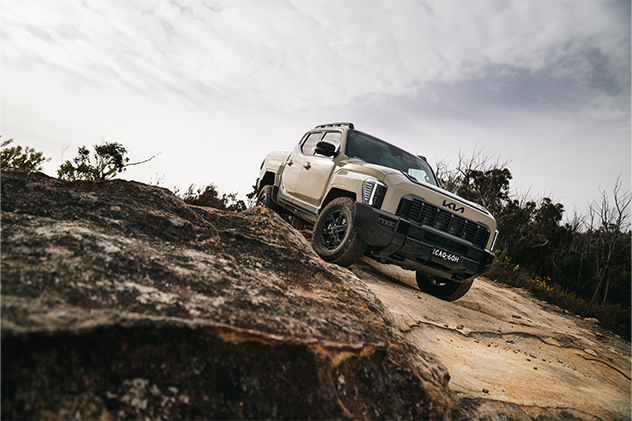
Across a two-hour exercise, not a single body part touches terrafirma, while excellent throttle mapping and a proactive traction control suite ensure reliable progress in sticky situations. Kia’s X-Trek mode (a cruise control of sorts for big ascents) brings a level of automation that makes even the most daring climb quite comfortable.
Kia admits only 20 per cent of Tasman owners will venture off-road; with the surfeit of technology fitted, hopefully more will feel encouraged – such is its ease of use.
Although the engine feels slightly undernourished when unladen, the Tasman still emerges favourably from a stint with a 2.2-tonne caravan in tow, too. Stability and poise is assured over rough surfaces and under heavy braking, while the dedicated tow mode appears to offer a superior gearbox mapping that doesn’t command as much downshifting under acceleration.
The new Tasman is a thoughtfully designed and executed ute ready to meet the broad demands of the dual-cab class.
Benchmark off-road ability and cabin comfort manage to largely offset the engine’s lack of torque in some situations, plus a ride that occasionally errs on the brittle side with its low-frequency damping.
Kia’s Australian ride and handling team has done a terrific job in its execution, and with some of their desired hardware upgrades it is entirely possible that Kia can make a good thing even better.